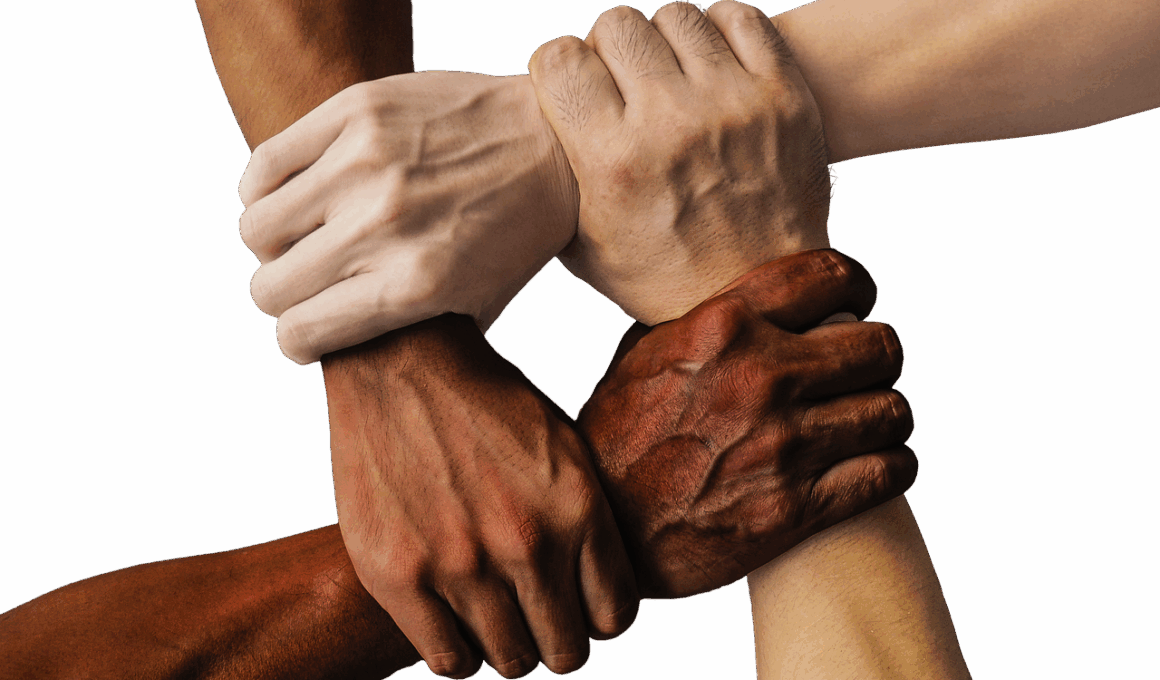Freerunning Communities and Their Unique Style Variations
Freerunning, a dynamic and expressive sport, is characterized by its adaptability and creativity. As it evolves, various communities worldwide have emerged, each developing unique style variations. These variations reflect local cultures and philosophies, resulting in distinct approaches to movement. Freerunners emphasize personal expression, using their surroundings as canvases for creativity. Each community cultivates its style based on its environment, shared values, and collective experiences. This creates rich cultural tapestries within the sport, where individual identities merge with communal spirit. As physical and artistic expressions blend, freerunners push boundaries, creating innovative moves and transitions. Global gatherings, workshops, and competitions foster cross-pollination of ideas, further enriching these local styles. For instance, the French community often highlights fluidity and elegance in movements, while others prioritize athleticism and strength. Social media has amplified the sharing of these styles, allowing freerunners to gain inspiration from across the globe. In this dynamic landscape, each style communicates the ethos of its community, celebrating diversity while uniting enthusiasts around a common passion for movement.
Freerunning styles vary significantly based on geographical influence. For example, in cities like Paris, the historical architecture offers unique obstacles and aesthetic qualities that shape movements. Freerunners express their creativity through stylish landings and intricate transitions, showcasing elegance and flow. In contrast, urban communities in areas like New York or Tokyo may adopt a more urban-influenced style, integrating elements of hip-hop culture and intense athleticism. This fusion often leads to explosive movements, high energy, and impressive tricks that challenge the limits of physical performance. Additionally, some communities embrace a nature-based approach, utilizing parks and rural settings for exploration and freedom. By connecting with their environment, they emphasize fluidity and grace. Freestyle styles further break conventional rules by focusing on individual expression and improvisation during practice. Each community celebrates its values through training, motivating participants to explore their limits while cultivating a sense of belonging. As these styles evolve, they shape interactions among practitioners and set standards for future generations of freerunners. Ultimately, this diversity enhances the overall tapestry of the freerunning community.
The Influence of Social Media on Freerunning Styles
Social media has remarkably impacted the development and dissemination of freerunning styles. Platforms such as Instagram and YouTube have become vital for sharing skills and creativity among practitioners. Freerunners can showcase their unique styles through videos, tutorials, and live feeds, allowing them to reach global audiences instantly. This visibility enables enthusiasts to observe and adopt various techniques from different communities, leading to an exchange of ideas and creativity. Features like hashtags connect users, creating robust networks of practitioners who inspire one another. Consequently, emerging styles frequently blend various cultural influences and practices. For instance, a freerunner in Brazil might incorporate elements of capoeira into their style, influenced by videos they watched online. Alternatively, a group in Australia may adopt moves inspired by performers in Europe, tailoring them to fit local aesthetics. This cross-pollination fosters an environment where experimentation thrives as individuals build upon each other’s innovations. Additionally, social media allows communities to celebrate their achievements collectively, fostering a sense of pride while inspiring newcomers to explore their unique styles more freely and authentically.
In addition to social media, workshops and events play a pivotal role in shaping freerunning styles. Gatherings, such as competitions and training camp sessions, provide opportunities for practitioners to exchange techniques and philosophies directly. These face-to-face interactions allow freerunners to learn from each other, engaging in shared experiences that contribute to both individual and communal styles. When various backgrounds come together, the results can lead to significant breakthroughs in creativity and performance. Freerunning events often feature well-established athletes who inspire others through their unique expressions of movement. Participants are encouraged to experiment and develop their interpretations of style in these collaborative environments. Moreover, the diverse skill levels represented at these events promote inclusivity. Newcomers can experience diverse styles firsthand, inspiring them to cultivate their distinct expressions. These gatherings also nurture mentorship, as veterans guide novices through techniques while sharing insights that shape their personal styles. As these exchanges occur, communities evolve and develop dynamic approaches to freerunning, reflecting an ongoing dialogue among practitioners across the globe.
Choreography and Freerunning Style Integration
Another compelling aspect of freerunning is its integration with choreography, often resulting in captivating performances that showcase unique styles. The fusion of dance and freerunning enables practitioners to create visually stunning sequences that highlight their abilities and personal expressions. By incorporating elements of rhythm, timing, and movement coherence, freerunners can produce choreographed pieces that captivate audiences. This artistic approach encourages freerunners to explore unconventional movements, extending their style beyond traditional tricks and flows. Exploring this fusion allows practitioners to experiment with transitions and formations that express individual creativity while ensuring seamless interactions with partners. Freerunning groups often collaborate with dancers, blending disciplines to enrich their performance styles. This cross-disciplinary dialogue fosters innovation, expanding the artistic boundaries of both forms. Additionally, choreographed performances create opportunities for storytelling through movement, as individuals convey themes and emotions while showcasing their skills. As the boundaries between disciplines blur, unique hybrid styles emerge, further diversifying the freerunning landscape. Ultimately, this integration broadens the appeal of freerunning, drawing in spectators who appreciate both the athleticism and creativity inherent in these expressive movements.
Moreover, some communities embrace unique clothing and gear that reflect their aesthetic values, further enhancing style variations. Custom apparel often embodies the spirit of each community, creating a distinctive identity that sets them apart. For example, certain groups may favor streetwear aesthetics, while others opt for functional athletic gear designed for performance. These choices contribute to their overall style, with practitioners choosing colors, logos, and materials that resonate with their shared identity. Additionally, specific brands have gained traction within freerunning communities, becoming synonymous with particular styles and movements. Collaborations between athletes and companies often yield custom products tailored for freerunners, allowing them to express themselves through their gear. Emphasis on functionality also plays a vital role, as practitioners require durable items that can withstand the rigors of their training. As communities continue to evolve, their clothing and gear choices reflect their dynamic brand identities and philosophies. Consequently, this emphasis on style fosters a sense of belonging, allowing practitioners to visually express their commitment to the sport and identify themselves with their collective culture and heritage.
Conclusion: Celebrating Diversity in Freerunning
In conclusion, the diversity within freerunning communities creates a rich and vibrant tapestry of styles, providing endless opportunities for creativity and self-expression. Each community contributes to the overall evolution of the sport by embracing unique characteristics shaped by their environment, influences, and cultural practices. As practitioners share their techniques, experiences, and gear choices, they collectively redefine what it means to be a freerunner. The influence of social media, events, and collaborations has fostered connections between practitioners, bridging gaps while promoting diverse expressions. The integration of choreography further enhances styles, revealing the artistic potential of freerunning as both a sport and a form of creative expression. As communities continue to emerge, evolve, and celebrate unique styles, freerunning becomes more than just a physical practice; it transforms into a way of life that inspires individuals to connect and explore their boundaries. As the sport grows, embracing its multifaceted nature, it invites enthusiasts worldwide to appreciate the beauty of movement while fostering a strong sense of belonging within the global freerunning family.
As we look towards the future of freerunning, it’s clear that the spirit of innovation and experimentation will continue to flourish. The ongoing dialogue between practitioners from various backgrounds will inspire new styles and techniques, ensuring that the sport remains fresh and exciting. There is immense potential for technical advancements, such as footage capturing technology and other creative tools that enhance the recording and sharing of movements. Furthermore, evolving urban landscapes present new opportunities for experimentation, encouraging freerunners to explore their environment in unprecedented ways. As more communities establish themselves around the globe, the collective consciousness of the sport will deepen, fostering further creativity and collaboration. This encourages individuals to push their boundaries while maintaining a strong sense of their origins. Ultimately, the potential for the future of freerunning seems limitless, with countless possibilities for unique expressions of style. As practitioners share their journeys through their communities, we witness the incredible richness that emerges from diverse experiences. Freerunning stands as a testament to human potential, where creativity knows no bounds, and each journey is an opportunity to explore newfound horizons.


